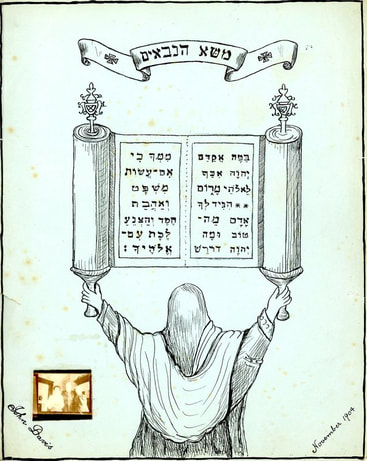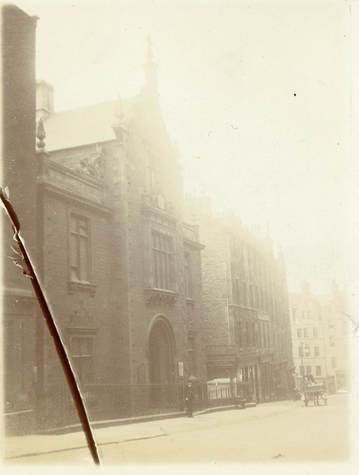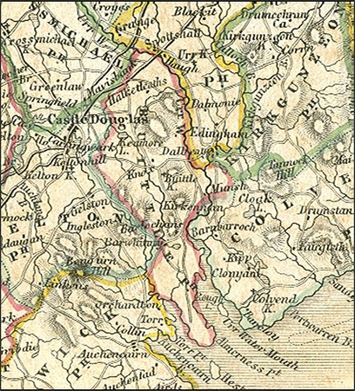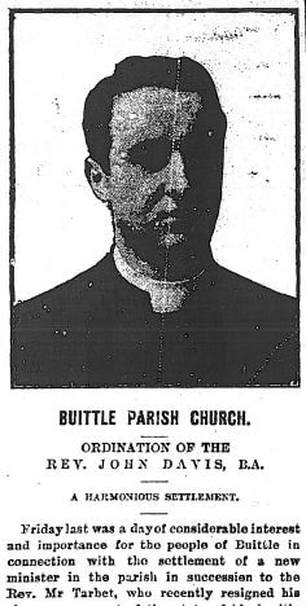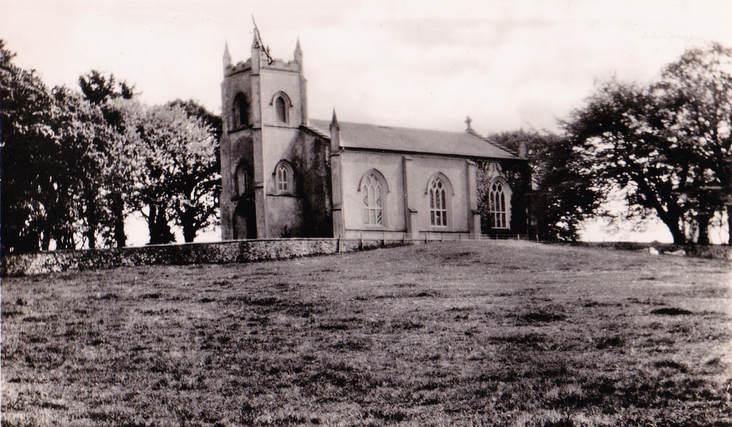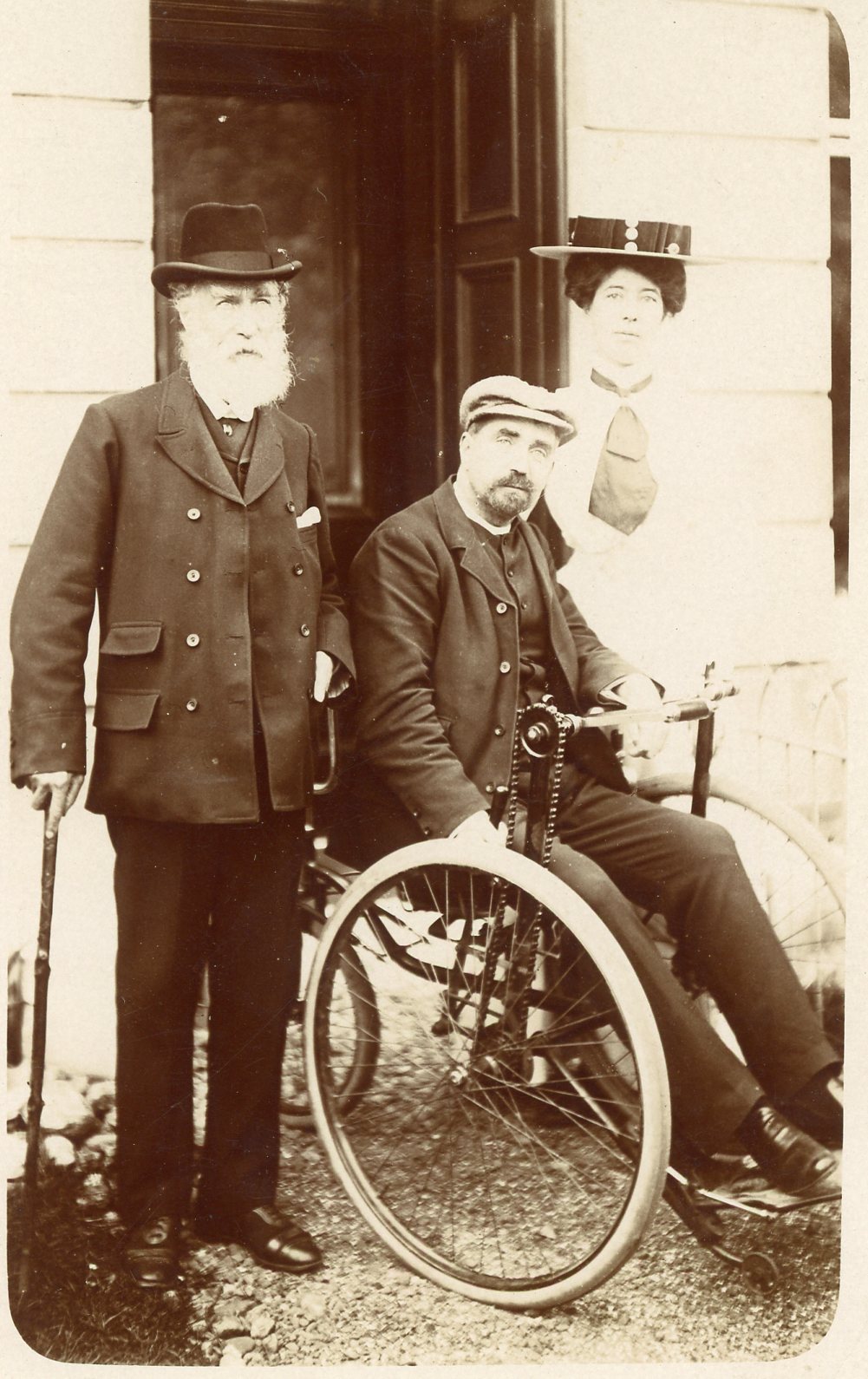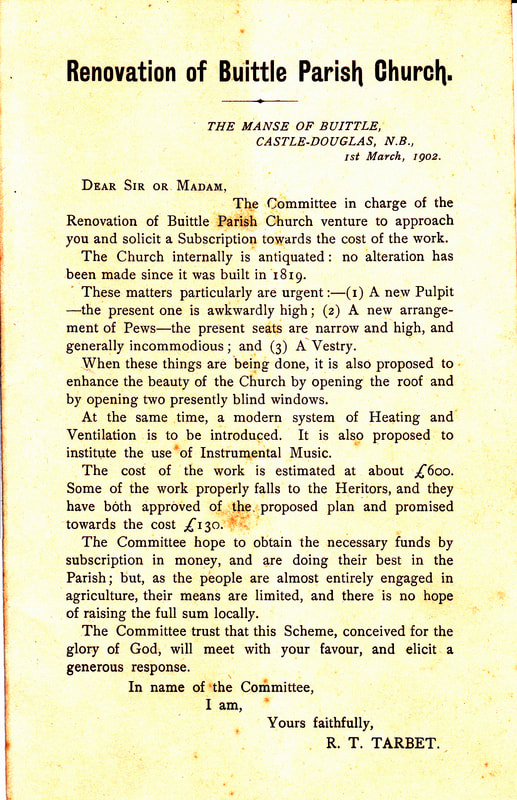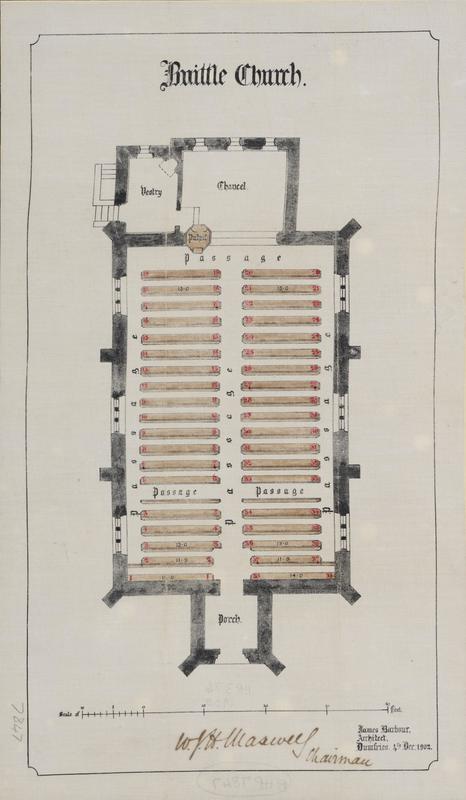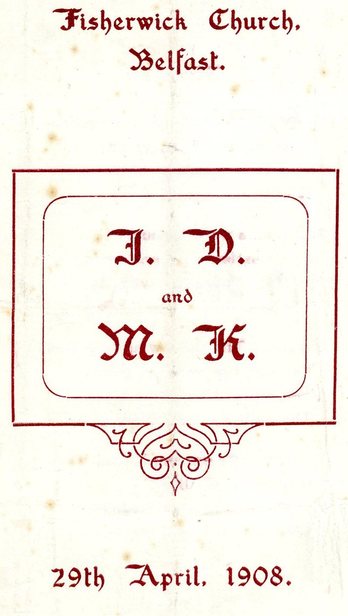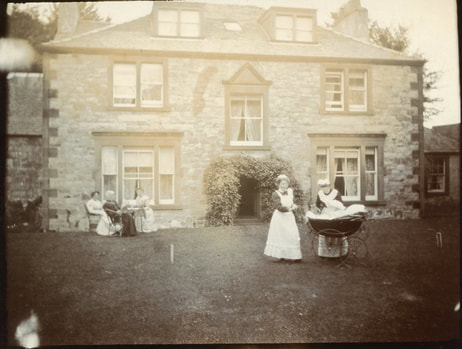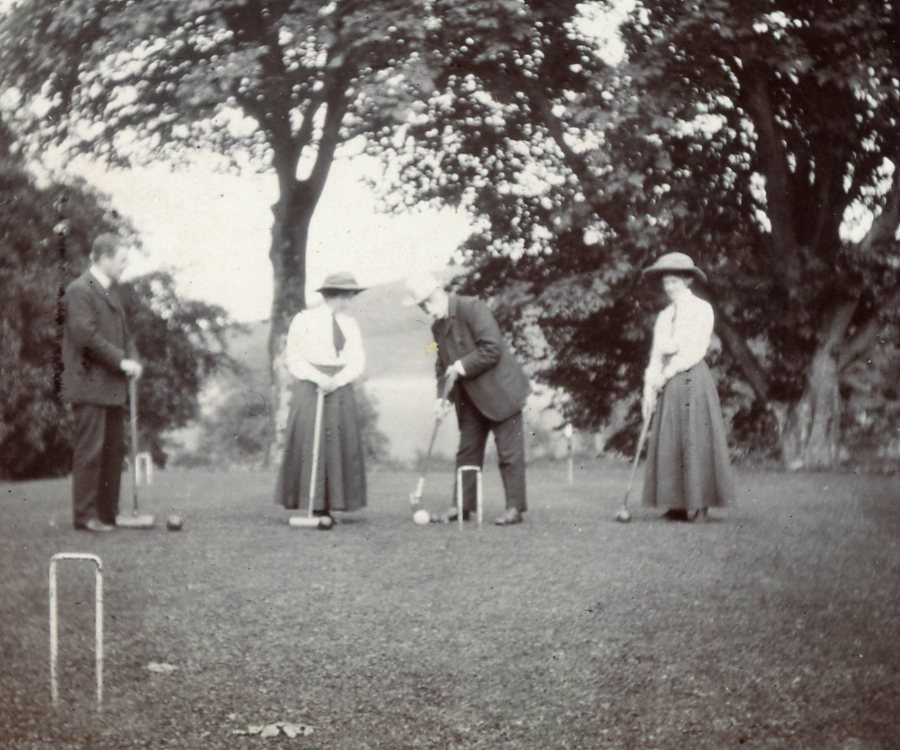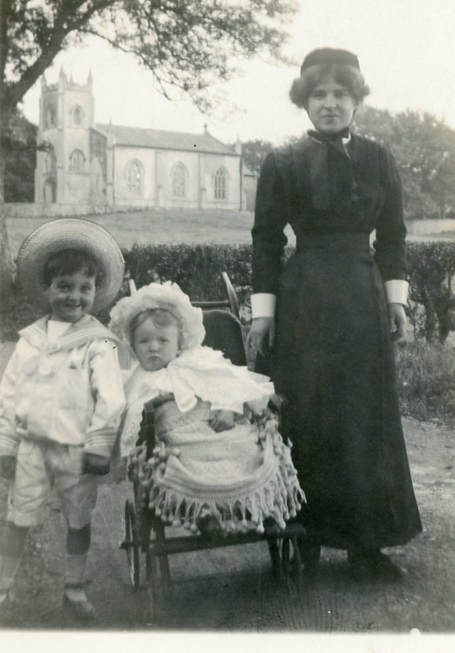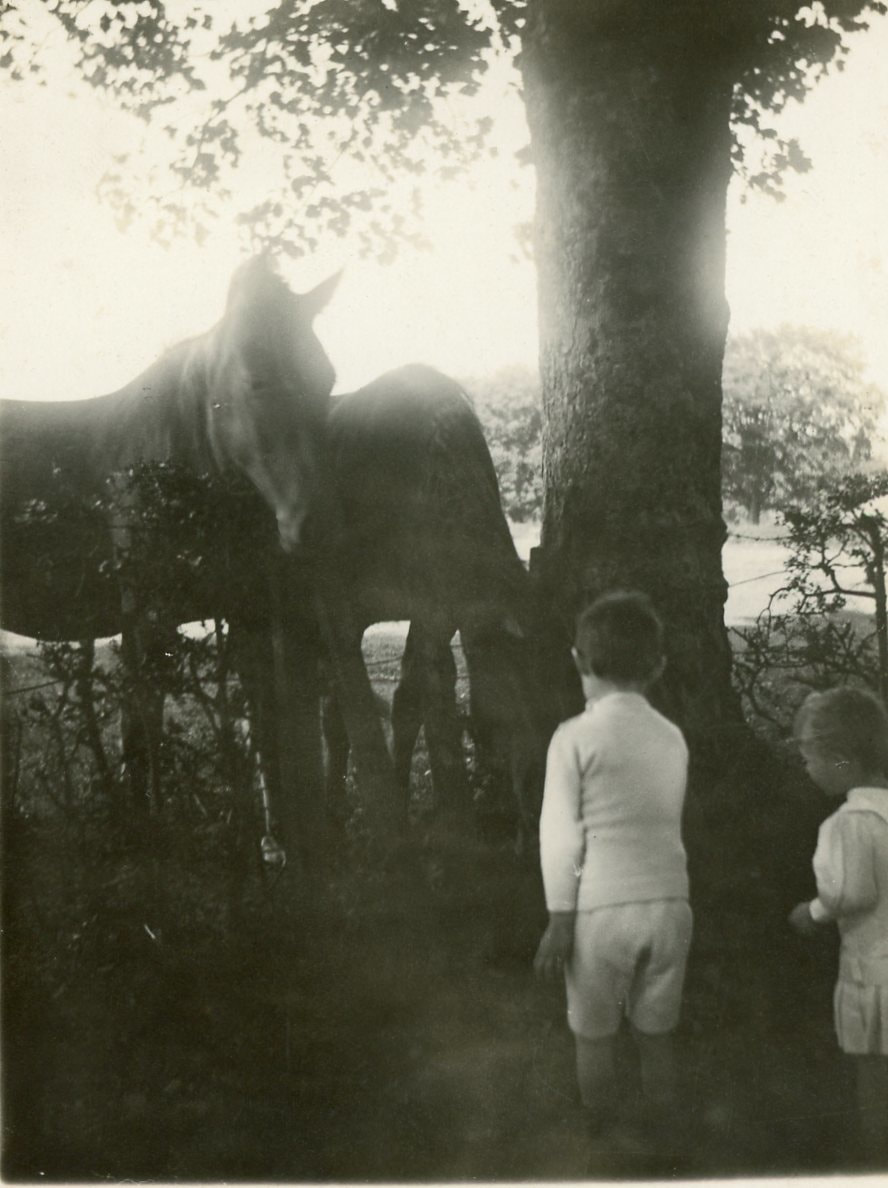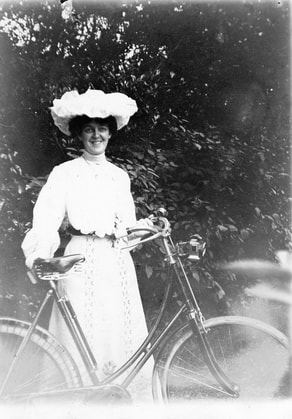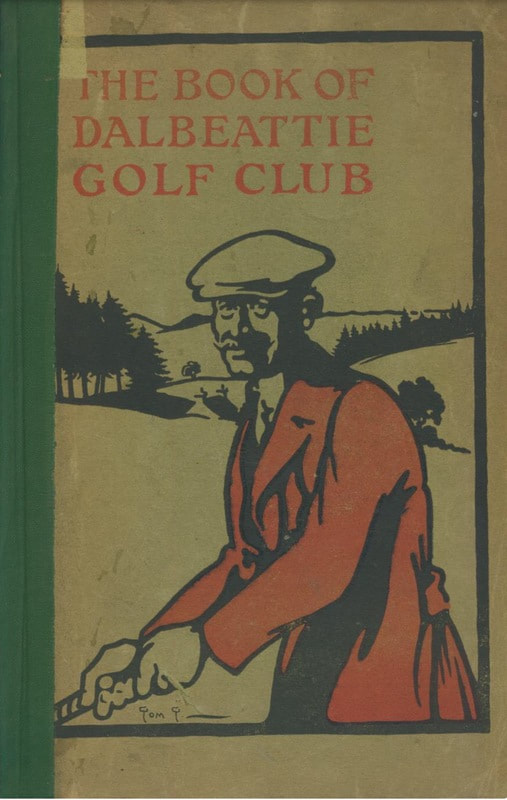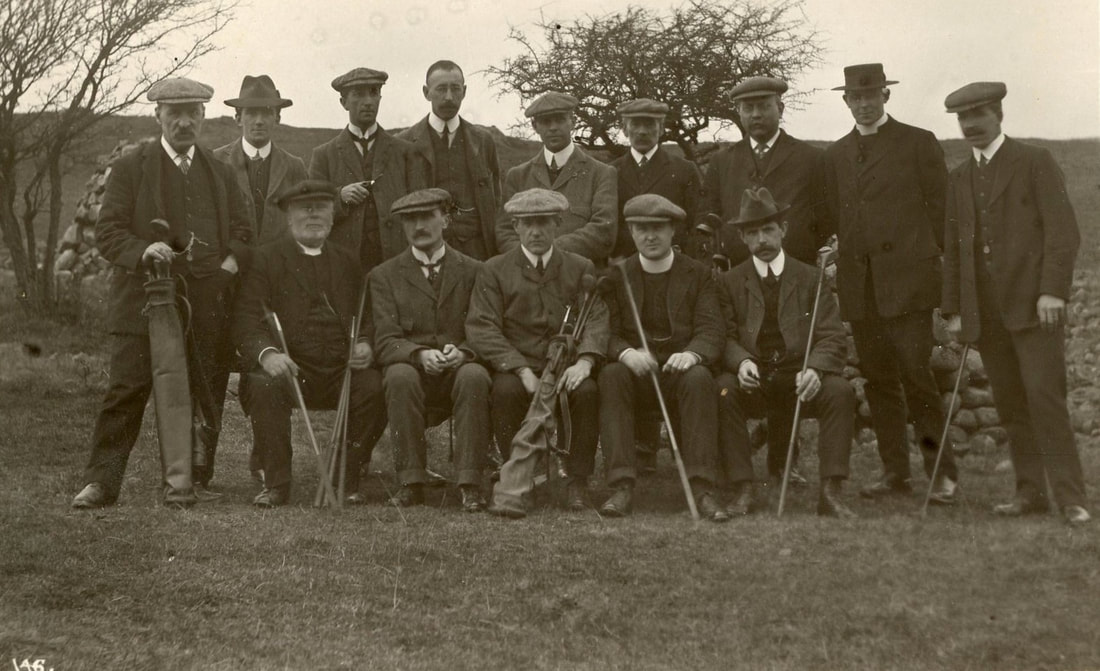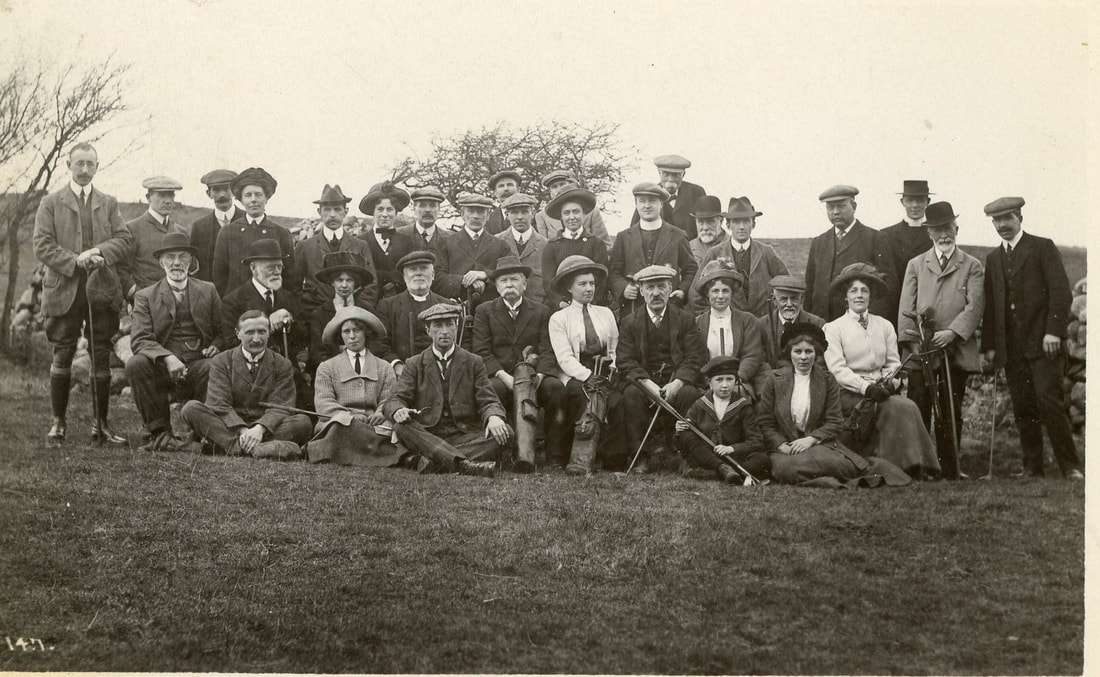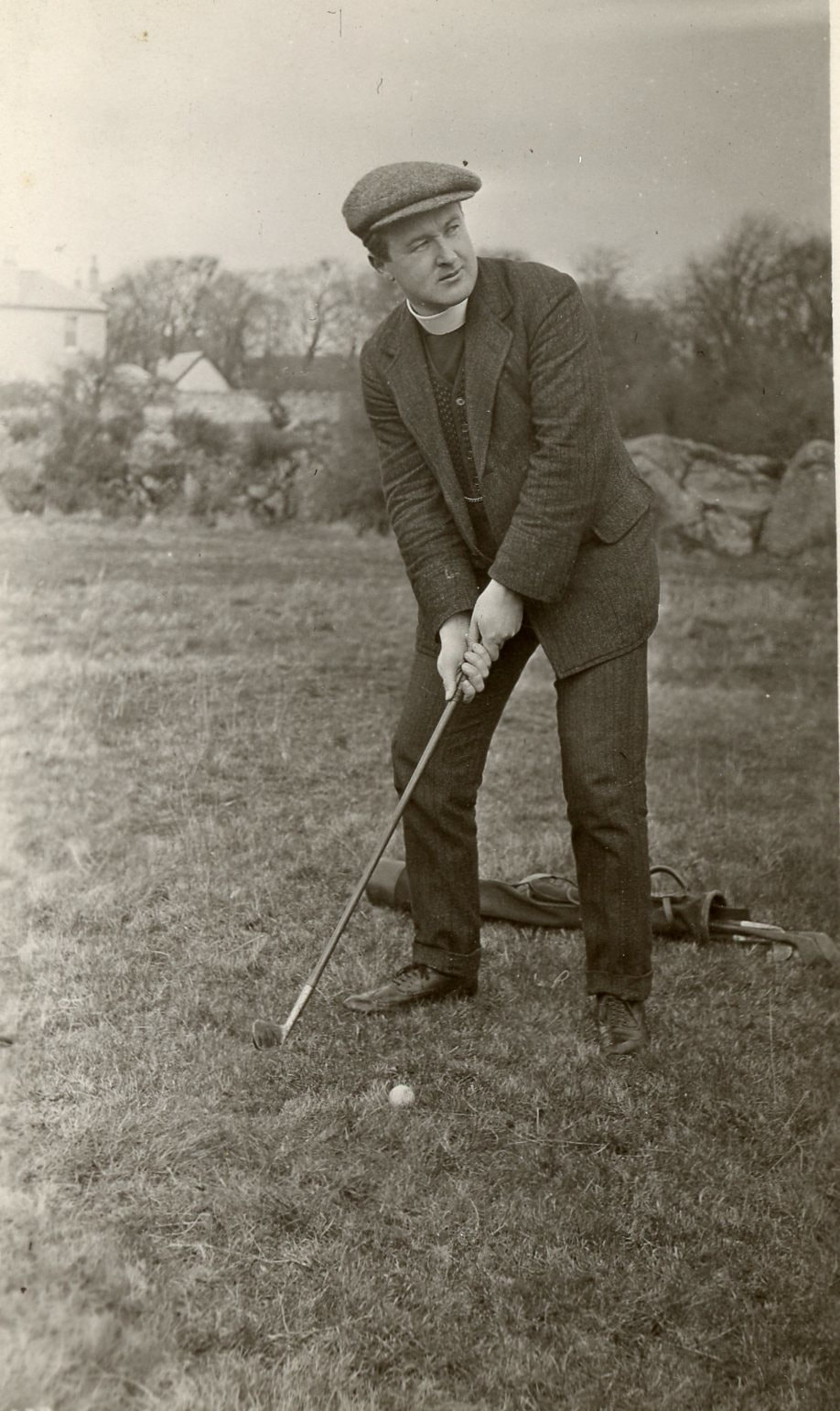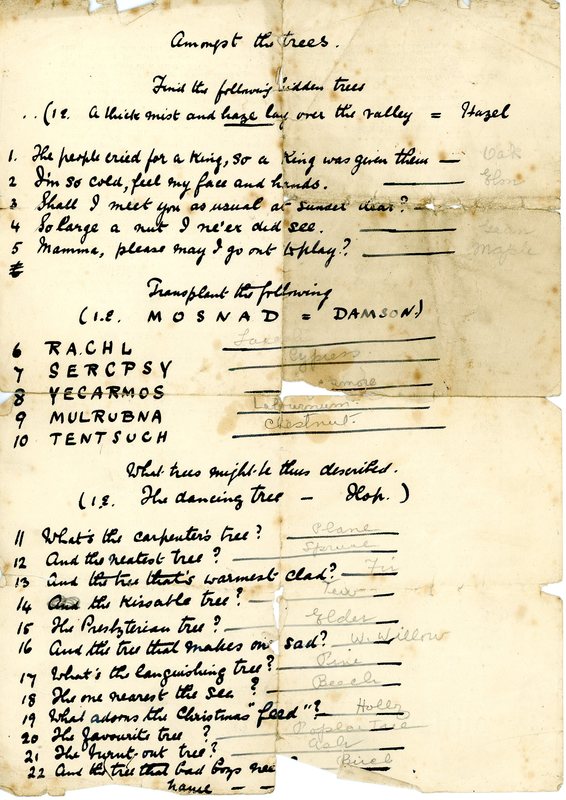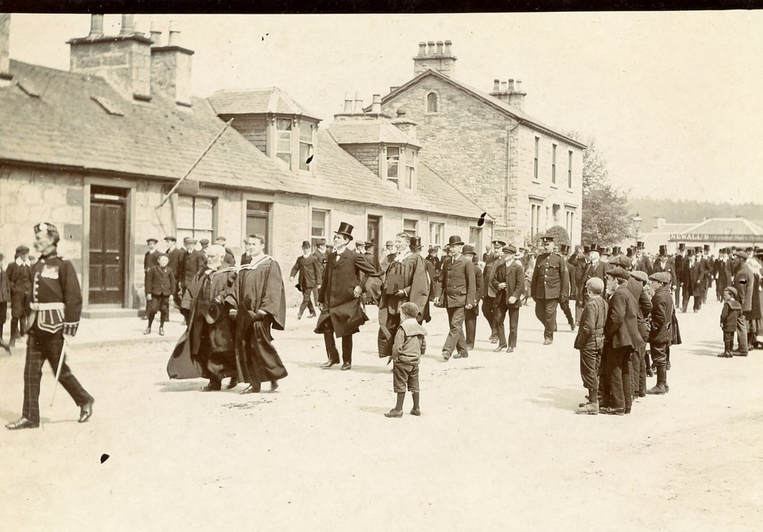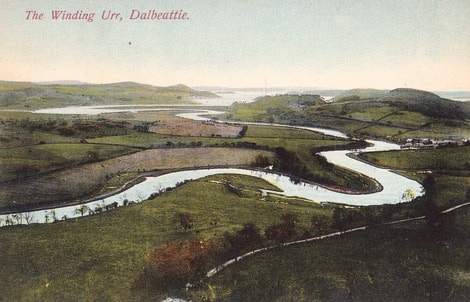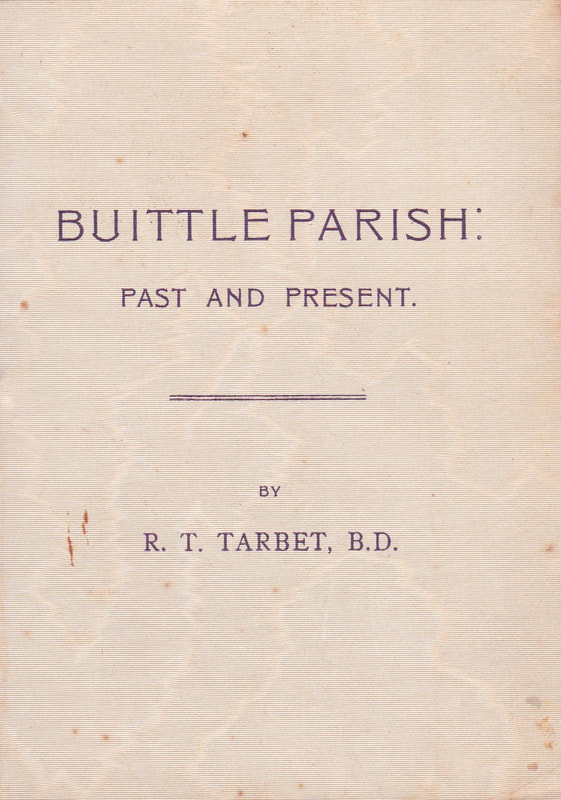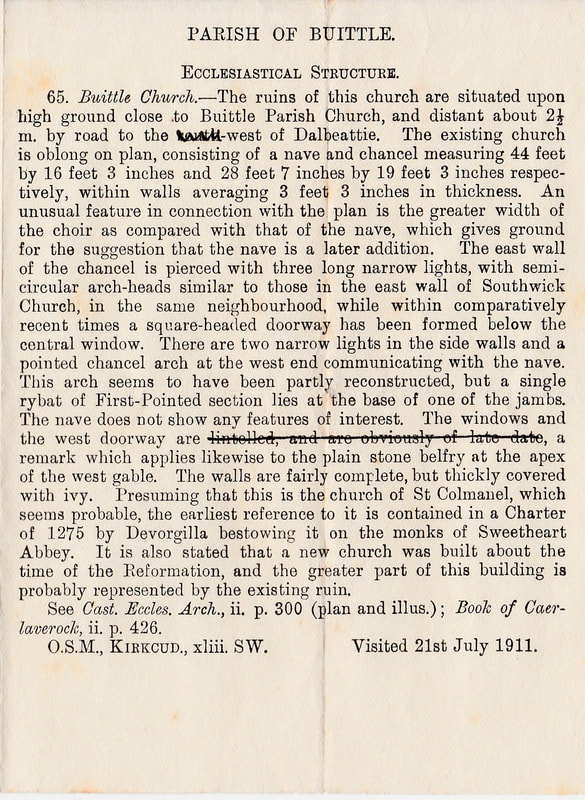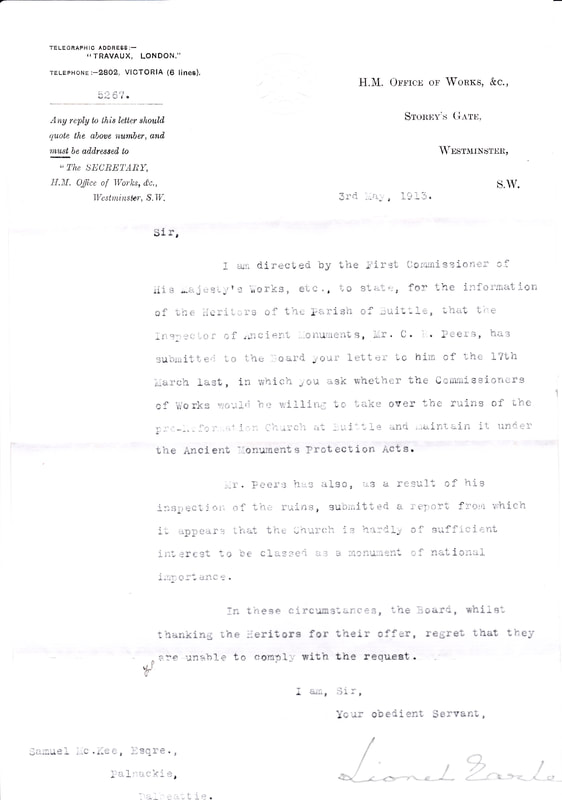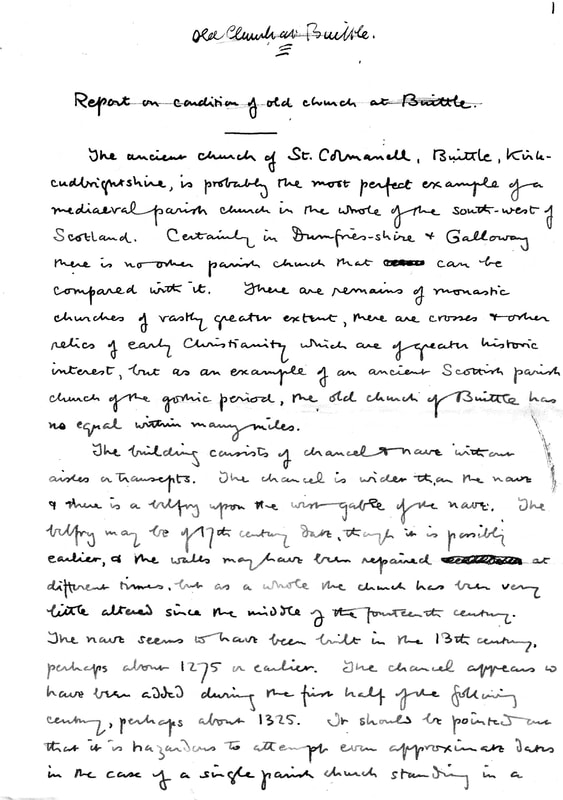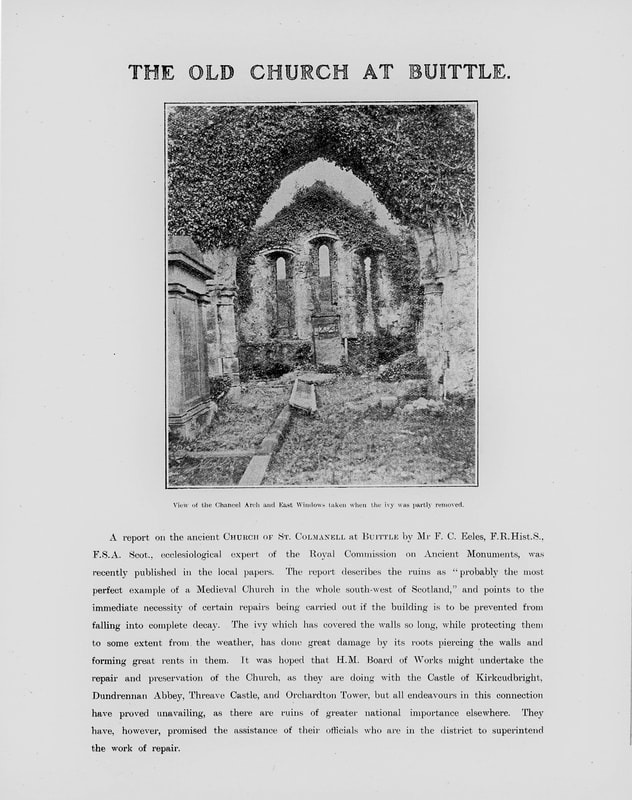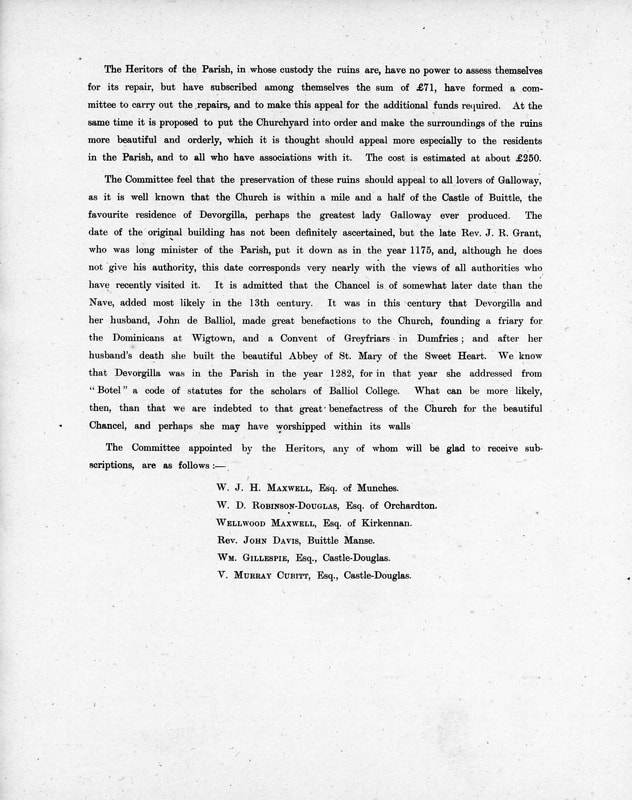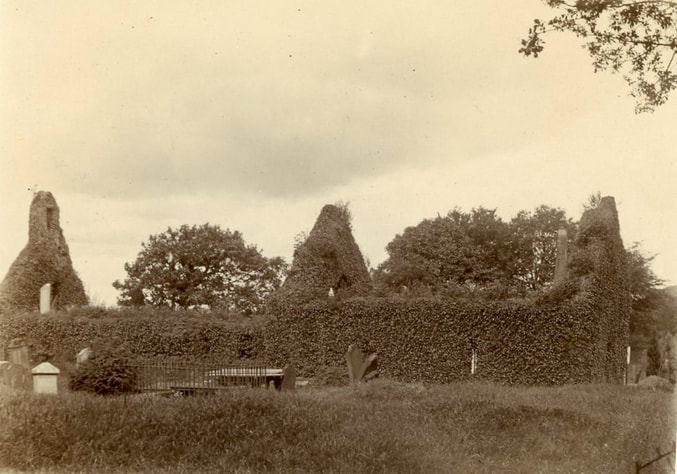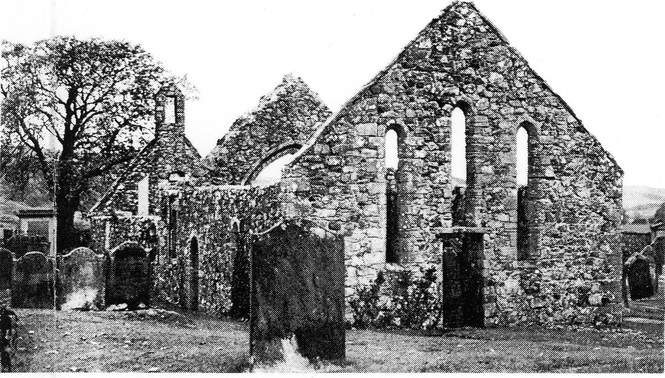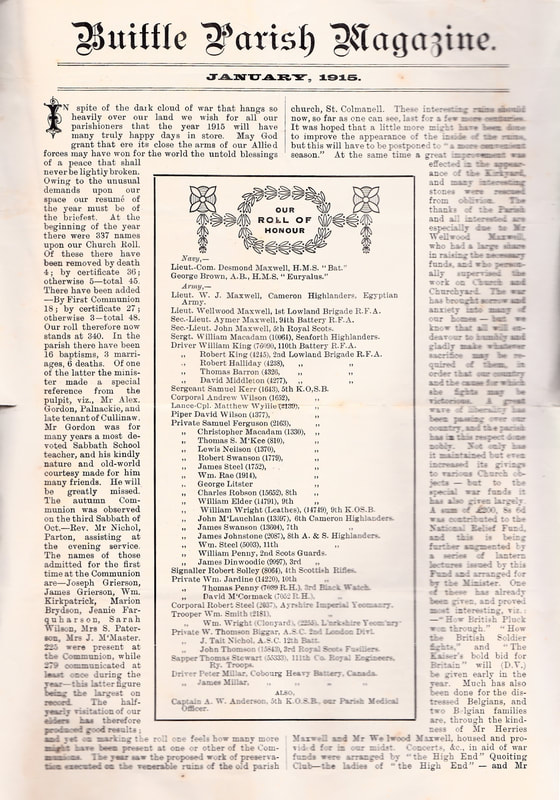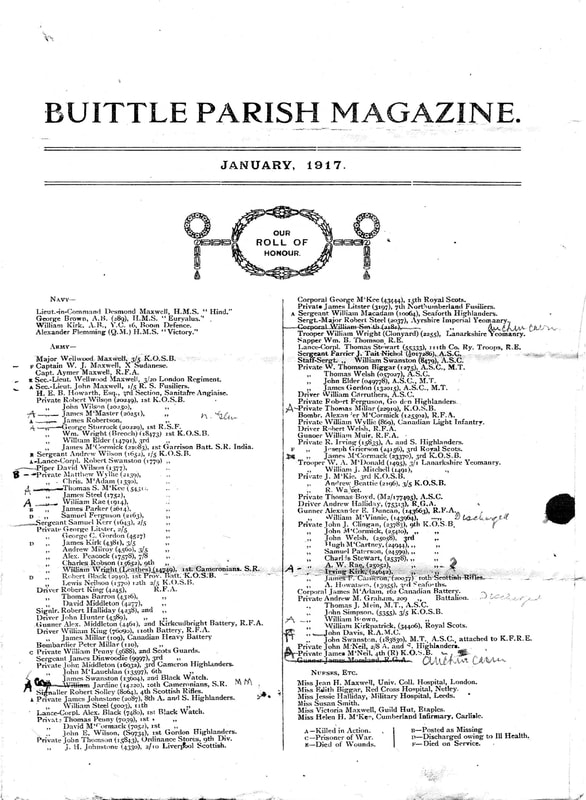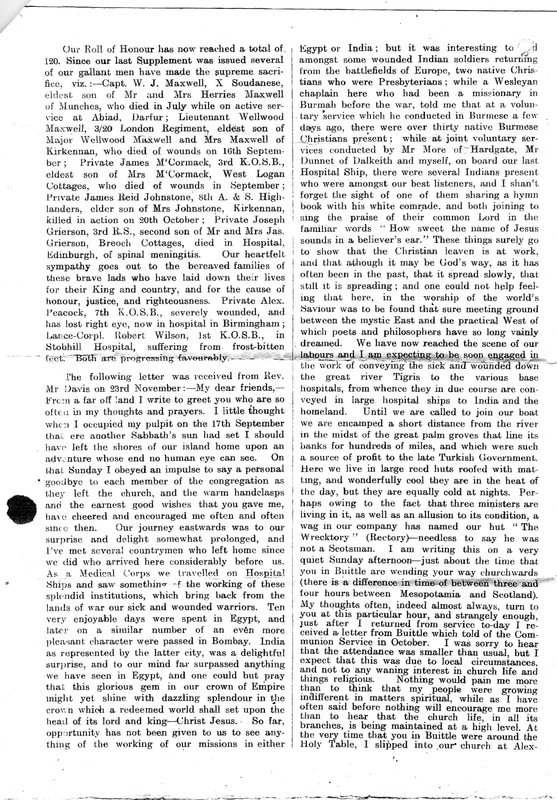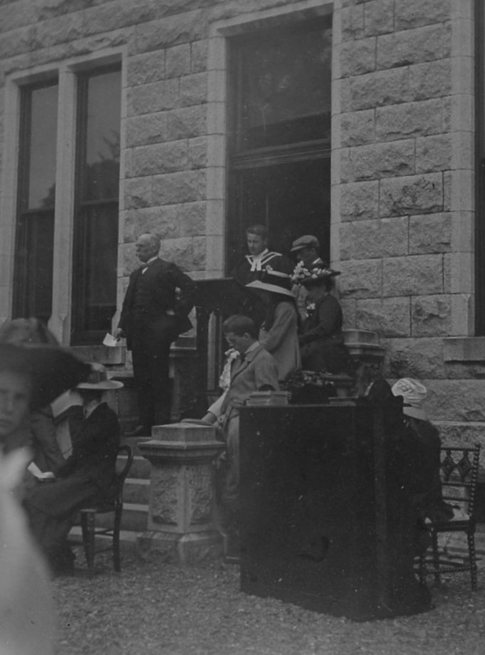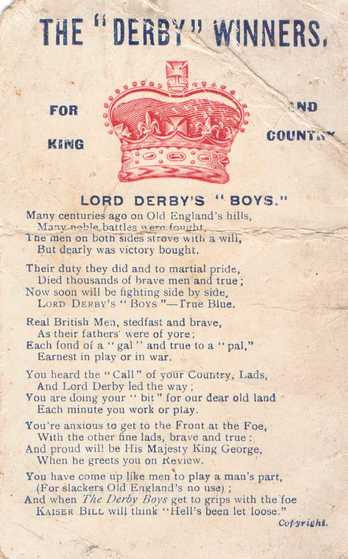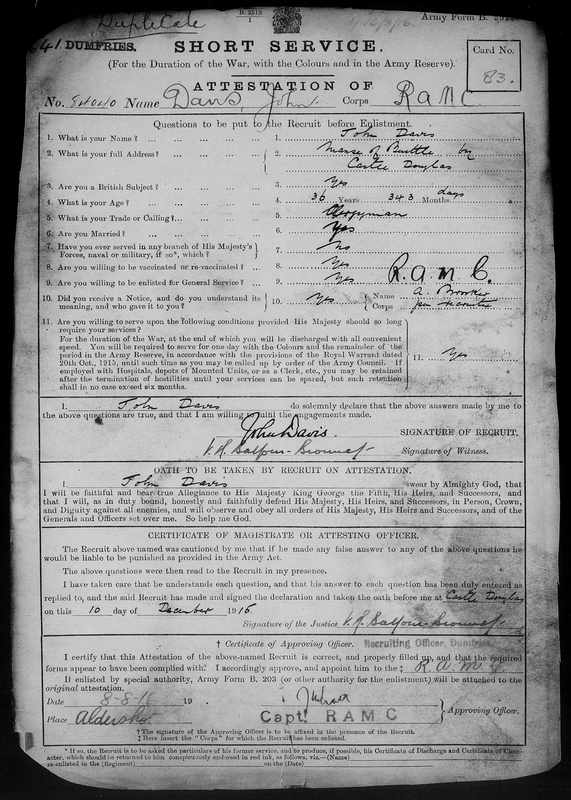II. burden OF THE PROPHETS
"The promised land stretched out before him and he saw not
only its beauties, but it's difficulties and dangers as well"
From the Rev John Davis' ordination speech, 12 July 1907 (Kirkcudbrightshire Advertiser, 19 July 1907)
only its beauties, but it's difficulties and dangers as well"
From the Rev John Davis' ordination speech, 12 July 1907 (Kirkcudbrightshire Advertiser, 19 July 1907)
Licensed by the Presbytery
John returned to Edinburgh and was licensed by the Presbytery in November 1904. Shortly after, he was appointed assistant to the Rev Dr Blair, St John’s parish church, Victoria Street, George IV Bridge. Here, in addition to his pastoral duties; caring for parishioners and visiting the sick where his work was “very highly valued", John was given responsibility for the Young Men’s Guild and the Sabbath School and was responsible for an increase in numbers attending both.
|
Having served for nearly two years as assistant minister at St John's, John put his name forward for the position of minister of Buittle parish church, in the Presbytery of Kirkcudbrightshire. The position had recently become vacant following the early retirement of the Rev Tarbet. By May 1907 a shortlist of five candidates had been selected by the Presbytery and voting for the election of the new minister took place on 22 May 1907. John was elected by a clear majority of 71 votes over the other candidates.
On leaving St John’s parish church the Rev Dr Blair and a large number of the Kirk Session together with the congregation, teachers and students of the Sabbath School met to pay tribute to John and present him with a number of gifts in recognition of his services as assistant minister and efforts in developing the Sabbath school. Speaking shortly afterwards at John’s ordination at Buittle parish church, the Rev Dr Blair paid the following tribute:
"He is a young man of whom I can comfortably speak in the highest terms, and of whom I hope great things as a parish minister. He is scholarly, well read, and a thoughtful young man, who is gifted with prudence, sound common sense, and discretion. He has a genial, kindly, and lovable disposition, which cannot fail to win for him a
|
sure place in your affection when you come to know him. He is evangelical in his teaching, but will present the old truths in a fresh and interesting manner. He has great influence with the young, and has the special gift of putting himself in sympathy with them... His sympathetic, kindly manner made him always welcome at the bedside of the suffering. I am confident he will do his work well in Buittle, as he has done at St John's and that you will never regret having selected him as your minister.”
Ordination, Buittle Parish Church
|
The Rev John Davis was ordained as minster of Buittle parish church on 12 July 1907. After a welcome address from the church Heritors, including Mr W. J. H. Maxwell of Munches and Mr Wellwood Maxwell of Kirkennan, John responded that to him, his ordination was “one of those Pisgah moments in life when the promised land stretched out before him and he saw not only its beauties but it's difficulties and dangers as well” and that “his heart warmed to the place and to the people, and...he could not refrain in the prayer that this place might be is corner of the vineyard.” (Kirkcudbrightshire Advertiser, 19 July 1907)
|
The modern parish church has its origins in the ministry of the Rev George Maxwell, minister of Buittle parish between 1785 and 1807. It was during his ministry that the Maxwells of Munches, the local land owning family of the parish, adhered to the parish church. As Heritors they oversaw the construction of the Manse (1793) two new school houses (1803 and 1819) and the new buttressed, gothic hall parish church (1819), designed by Walter Newall, situated on rising ground, adjacent to the old Mediaeval church. In 1902, the Rev John Davis' predecessor, the Rev. Tarbet instigated the renovation of the church to include a new pulpit, new arrangement of pews, and the addition of a chancel and vestry, designed by James Barbour, estimated to cost £600, which was successfully raised from the parishioners.
Family and Parish life
Shortly after his ordination, John married Madge Kernahan, the eldest of six daughters to Thomas Kernahan of Lower Crescent, Belfast. They had presumably met during John’s time in Belfast either prior to 1900 or on his return in 1903 following the death of his brother, Alexander Christie. The wedding was held at the Fisherwick Presbyterian Church on 29 April 1908 followed by a reception at her father’s house on Lower Crescent.
John returned with his wife to the Manse at Buittle where she was warmly welcomed into the community. In time the Manse was to become home to their three children; John Sydney St. Inan (1909), Arthur Douglas (1912) and Dorothy Doreen (1913); believed to have been the first children born there since it was built in 1793. The family enjoyed a happy and comfortable life and photographs from the period show the children with their nanny, or cycling and walking in the countryside. Photographs also capture a visit by Madge’s parents to see their grandchildren and a game of croquet on the lawn. Cycling was an important means of transport in a rural parish such as Buittle where John (and Madge) would travel to the neighbouring towns of Palknackie and Dalbeattie and to visit members of the congregation dispersed across the parish. They also enjoyed tennis and golf.
John in particular was a keen golfer and a member of the Dalbeattie Golf Club, selected for the club's Gentleman's Match Team in 1912. The Book of the Dalbeattie Golf Club (1912) contains a brief biography of each of the team members and the entry for John reads:
"A warm welcome always waits the genial minister of Buittle when he puts in an appearance on the links. He is one of the later acquisitions to the membership, and since his introduction to the club has proved himself a useful match player." (The Book of the Dalbeattie Golf Club, 1912)
In his ministerial role John attended to the pastoral needs of his parishioners, often assisting with local fundraising efforts. He was a member of the Parish Council and a member of the Buittle School Board, with responsibility for the children's religious education, examination and the efficient running of the schools; on one occasion advocating the purchase of a new piano for the Palnackie school. As a local minister the Rev John Davis would also represent the parish at local events, together with other ministers, landowners and dignitaries. A rare surviving photograph captures a parade in Dalbeattie heading along Maxwell Street to Craignair Church. The parade is led by a soldier dressed in the uniform of the K.O.S.B., followed by three ministers, one of which is the Rev John Davis and members of the Town Council. The parade is thought to have been part of a larger celebration marking the 50th anniversary of Dalbeattie obtaining Burgh status, dating the parade to 18 July 1908.
preservation of buittle old kirk
John was a man “possessed of antiquarian tastes” and as such he would have been well aware of the rich history of his parish; not least as his predecessor, the Rev Tarbet, published a short history of the parish only a few years earlier, entitled ‘Buittle Parish Past & Present'. In particular its thirteenth century association with John de Balliol, the nominee of King Edward of England for the Crown of Scotland, and the founder of Balliol College, Oxford - and his wife Lady Devorguilla of Galloway who guaranteed the future of Balliol College with a permanent endowment and formal Statutes signed at Buittle castle in 1282. From Buittle she also planned the foundation of the convent of Greyfriars at Dumphries in 1262, supervised the building of Sweetheart Abbey in 1273 and planned the Franciscan Friary of Dundee in 1284.
|
Lady Devorguilla also had a direct link to Buittle Old Kirk, the earliest reference to which is contained in a charter of 1275, in which she bestows it to the monks of Sweetheart Abbey, at a time when it was the place of worship of her and her family. The remains of this mediaeval church dedicated to St. Colmanell consist of a nave dating to the 12th century and a choir dating to the early 14th century.
|
Even more ancient, was the church of Kirkennan, situated on the bank of the River Urr beside the Dalbeattie to Palnackie road. No obvious traces remain and the precise location of the church is unclear; although accounts from the 19th century recall bones and gravestones being uncovered during the construction of the road. It is generally accepted (certainly when The Rev Tarbet wrote his historical account of the parish in 1904) that this church was dedicated to St. Inan, from where the name is derived; literally 'Church of Inan'. The records suggest that the congregation of Kirkennan combined with another congregation more centrally located in the parish, possibly on the site of the remains of the mediaeval church, dedicated to St. Colmanell. For instance, "An Historical Catalogue of the Scottish bishops", 1688, refers to the parish of "Bootle, olim Kirkennan" ('olim' Hebrew for ‘immigrants’).
We know John took a keen interest in the history of the parish. His eldest son Sydney, was given the middle name ‘St. Inan’, a direct reference one assumes to Kirkennan; not only demonstrating his knowledge of the ancient Christian history of the parish but also grounding his family in this local tradition.
He also “took a great interest in the restoration work of the pre-Reformation Church” - the Buittle Old Kirk - the mediaeval church dedicated to St Colmanell, situated adjacent the modern parish church. In 1911, The Royal Commission on the Ancient Monuments of Scotland set about compiling an inventory of ancient monuments in Galloway, and the Old Kirk was inspected on 21 July 1911. On 17 March 1913 the Heritors of the church wrote to the H.M. Office of Works requesting that the Commissioners of Works take over the ruins. The response of H.M. Office of Works would have been disappointing, stating that “it appears the church is hardly of sufficient interest to be classed as a monument of national importance.”
On 25 June 1913 F. C. Eccles, Ecclesiological Expert to the Royal Commission on Ancient Monuments (Scotland) submitted a report on the condition on the Old Church at Buittle, concluding that:
"The ancient church of St. Colmanell, Buittle, is probably the most perfect example of a mediaeval parish church in the whole of the south west of Scotland. Certainly in Dumfriesshire and Galloway there is no other parish church that can be compared with it. There are remains of monastic churches of vastly greater extent, there are crosses and other relics of greater historic interest, but as an example of an ancient Scottish parish church of the Gothic period, the Old Church of Buittle has no equal within many miles.
It is unnecessary to point out the extreme importance of doing all that is required to save this most interesting church from further decay and to put it into a satisfactory state of repair. The ivy with which it has been overgrown...has been gradually undermining the stability of the whole structure. All the roots of the ivy ought to be cut through at once, and in the course of time all parts of it should be removed.” (F C Eccles, Ecclesiological Expert to the Royal Commission on Ancient Monuments (Scotland), 25 June, 1913)
In the absence of financial assistance from H.M. Office of Works, the Heritors set out to raise the necessary funds, some £250, from the parishioners. This achieved, the remedial works commenced, clearing the ivy and stabilising the structure:
"The year (1914) saw the proposed work of preservation executed on the venerable ruins of the old parish church, St. Colmanell. These interesting ruins should now, so far as one can see, last for a few more centuries. It was hoped that a little more might have been done to improve the appearance of the inside of the ruins, but this will have to be postponed to a “more convenient season”. At the same time a great improvement was affected in the appearance of the Kirkyard and many interesting stones were rescued from oblivion.” (Buittle Parish Magazine, January 1915)
the shadow of war
“The war has brought sorrow and anxiety into many of our homes - but we know that all will endeavour to humbly and gladly make whatever sacrifice may be required of them, in order that our country and the cause for which she fights may be victorious.” (Buittle Parish Magazine, January 1915)
With the outbreak of the First World War, John saw it his duty to support the war effort. He established a scheme to raise funds for soldiers from the parish which was subsequently adopted across the Stewartry:
"Sometime ago a collection was made in Buittle Parish for the purpose of sending a present to all those from the parish at present serving in the army and navy. A sum of £20 was subscribed, but since then a similar scheme has been promoted for the whole of the Stewartry. The scheme originated with the Rev John Davis, the parish minister, who, in view of the county scheme, called a meeting of the subscribers to the parochial fund.” (Dumfries & Galloway Standard, 28 November 1914)
He held patriotic sermons, encouraging all men of military age to contribute to the war effort:
"On Sunday evening the Rev John Davis, Buittle, conducted the evening service at Southwick. Despite the inclement weather the church was well filled. The service was an intercessory one. Preaching from Samuel, "All the people shouted 'God save the King' ", Mr Davis referring shortly to the occasion of Saul's choice as King turned to present day affairs. He made an eloquent appeal to all of military age and ability to consult their own conscience as to whether they were entitled to go to the front or do their share in staying at home. The able discourse was listened to with a rapt attention. The organist, Mr James Halliday, played the "Marseillaise", the congregation standing.” (Dumfries & Galloway Standard, 2 December 1914)
And he co-ordinated the war work within the parish and organised a series of lantern lectures to raise war relief monies on topics such as "How British Pluck won through", "How the British Soldier fights" and The Kaiser's bold bid for Britain".
By April 1915 the parish Roll of Honour contained 56 names and at least ten men were on service either abroad or at sea. The casualties kept increasing and by January 1917 the Roll of Honour contained 120 names. From his pulpit, John delivered sad news on a depressingly frequent basis. Some families such as the Maxwells, suffered great loss.
“It is with profound regret, regret which I know will be shared by every member of this church and parish, that today we have to place on our Roll of Honour opposite the name of Second Lieutenant John Maxwell, of the 5th Royal Scots Fusiliers, the fateful words, 'Killed in action'.” (Dumfries & Galloway Standard 4 August 1915)
|
“During the service Mr Davis alluded to the casualties to Private James Swanston and Private William Rae, and said another two soldiers from the district were in hospital from sunstroke.” (Dumfries & Galloway Standard 6 October 1915)
“The Rev John Davis made the following reference to the death of Mr C.L. Maxwell, son of Mr and Mrs Herries Maxwell of Munches: only a few brief months ago we were called upon to sorrow with the Munches family over the death on the battlefield of the youngest scion of the house, Lieutenant John Maxwell. Today we mourn with them anew, for from the Far East...there has come the brief cabled message that Charles Lionel Maxwell had suddenly and unexpectedly passed away.” (Dumfries & Galloway Standard 26 April 1916)
“It seems only a few months ago since we assembled at Kirkennan to tender our congratulations to the young laird on attaining his majority, and then we learn the sad news that he has fallen on the terrible but glorious battlefields of France. Lieutenant Wellwood Maxwell died a hero's death on the terrible but glorious battlefields of France.” (Buittle Parish Magazine January 1917)
“It was also with great regret that I heard of the death of Private James McCormack. Few lads in Buittle were more determined than he to become a soldier. From the early days of the war he volunteered repeatedly but for a time was not accepted. At length, however, he attained his ambition, and after all too brief a period of service he has laid down his life for his country.” (Buittle Parish Magazine January 1917)
|
a stewartry minister to enlist
“The war and its claims on the young manhood of the nation, took a firm hold on Mr Davis, and as it proceeded he impressed upon the youth of his congregation with increasing emphasis the duty which they owed to their country. Regarding example as of equal importance to precept, he decided to enter the army.” (Dumfries & Galloway Standard, 1st August 1917)
By May 1915 it was clear that nationally, voluntary recruitment alone could not sustain the war effort and the upper age limit for recruits was increased from 38 to 40. In a further effort, on 11 October 1915 Lord Derby introduced The Group scheme under which men aged 18 to 40 could enlist voluntarily, or attest with an obligation to enlist, if called upon later on. The War Office notified the public that the deadline for registration under the scheme was 15 December 1915.
In September 1915, the Rev John Davis was granted leave to enlist under this scheme. The minutes of the Kirk Sessions at this time reveal the dilemma that John and the elders felt: on the one hand, having emphasised the duty owed by the young men of the parish - and having seen so many be killed or return injured - and feeling himself a strong sense of duty to enlist as a man of military age; on the other, a sense that taking another's life was at odds with the teachings of the Scripture.
John had hoped to enlist as a Chaplain but with no position being available enlisted as a Private in the Royal Army Medical Corps; the highest rank open to a recruit with no medical training. Whilst it was unusual for ordained ministers to enlist in a 'combatant' role there are twenty Scottish ministers (both Church of Scotland and United Free Church) listed on the War Memorial at St Giles Church in Edinburgh, who died as 'combatants' in the First World War, of which seven came from parishes in the south west of Scotland.
Those who attested under the Derby scheme such as John, were classified as Class A and given a grey armband with a red crown as a sign they had volunteered. These men were further classified by year of birth and marital status and allocated a group number. As a married man, John would have been allocated to Group 43 which mobilised from 13 June 1916.
Proudly powered by Weebly
